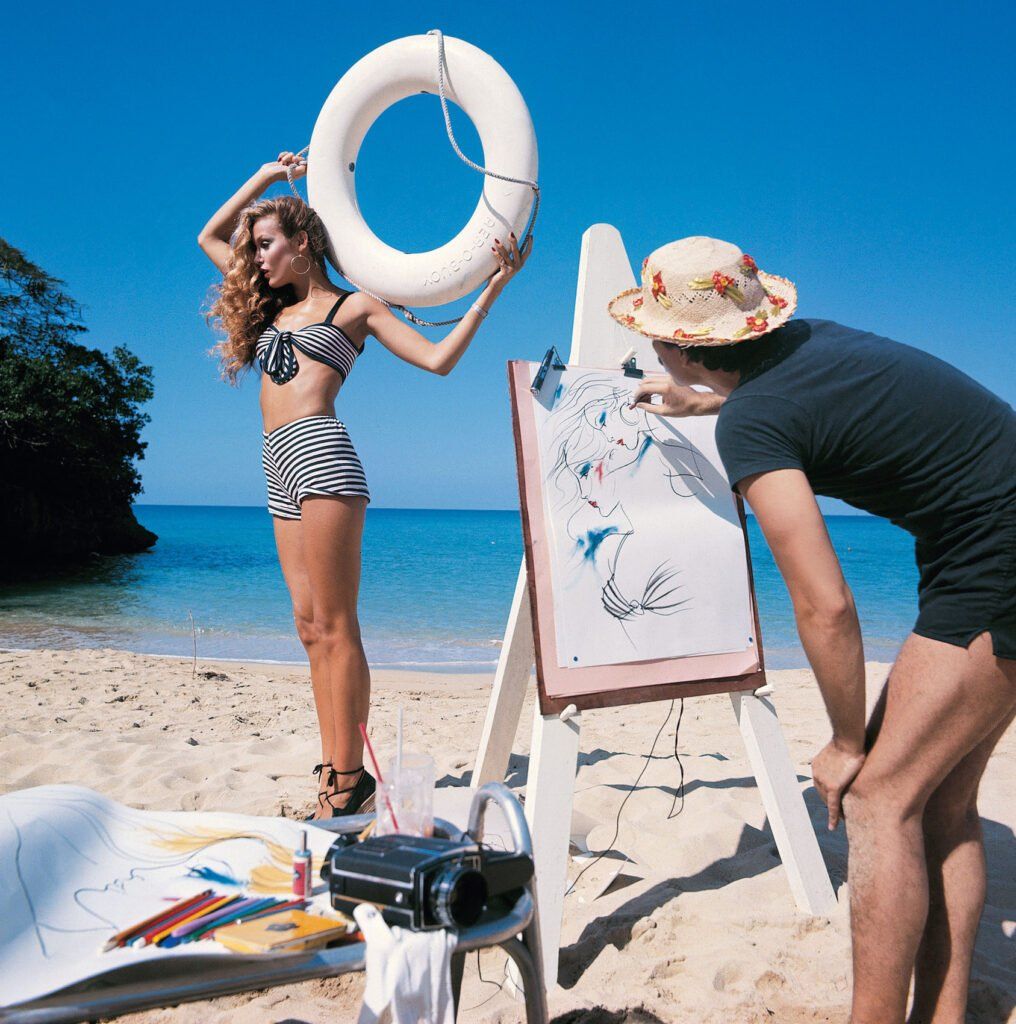The McCord Museum invites you to delve into the past of fashion photographs taken by the famous Norman Parkinson between the 1930s and the 1980s. A true pillar of exploded and colorful images, the Briton saw his work published in the pages of Vogue magazines , Harper’s Bazaar, Town & Country, Queen and several other international publications.
His lens has captured many icons like Audrey Hepburn, Ava Gardner, Elizabeth Taylor, Montgomery Clift, Gregory Peck, Twiggy and Katharine Hepburn, in addition to photographing big names in politics, literature and music. Nearly 80 photos taken throughout his career are featured in the Norman Parkinson — Still in Fashion exhibition on view from April 19 to September 2, 2024. Fugues spoke with Zoë Tousignant, curator of photography at the McCord-Stewart Museum.
Why does Norman Parkinson’s work deserve an exhibition?
Zoë Tousignant: He is a photographer who has worked over six decades. This is a very long career in his field. He spanned the 20th century in fashion photography, celebrity portraits and reporting. Its history also overlaps with that of the mass media. In the 1930s, 1940s and 1950s, we saw the beginnings of the very inviting illustrated magazines that we saw on newsstands, with the use of photography to sell clothes. Parkinson experienced the birth of fashion photography as a niche in its own right until its transformation in the 1960s and 1970s.


Why is he recognized as a pillar of fashion photography?
Zoë Tousignant: He was one of the first in Britain and internationally to present a more modern vision of women. With him, she was not restricted to the domestic world. She lived outdoors, she ran, she jumped, she did activities and she was part of public life wearing very nice clothes. In the 1930s and 1940s, her vision was in symbiosis with developments in feminism, the impact of the war on the place of women in the world of work and several other social phenomena. He managed to capture these changes in the fashion field in a very colorful and humorous way. It presented women in funny and unusual places. He also dabbled in color photography, even when the technology was still in its infancy.
How did his humor translate into photography?
Zoë Tousignant: In the choice of places to carry out her photo sessions. The classic example of what I am saying is when he photographed his wife, the model Wenda Rogerson (later Wenda Parkinson), in South Africa: he had her ride on an ostrich, the animal When he started running, he continued to photograph and apparently said to his wife: “More profile, Wenda, more profile!” » It was crazy ideas like this that allowed him to stand out. He had mannequins mounted on monuments or on the roofs of large buildings. He made them do acrobatics to get fantastic images. He sold clothes through the creation of fanciful stories.
Before him, what did the static and composed approach to fashion photography look like?
We must remember that fashion photography began primarily in the 1920s. At the time, photos of the genre were mostly taken in studios and women were presented as objects: hangers or sculptures that wore the clothes. Everything was done with a constant concern for elegance and we sought to show the lines of the creations, without the movement being an integral part of the image. Parkinson was one of the first to want to represent movement in an essentially static image. Let us remember that television did not yet exist. Cinema existed. And he sought to represent life and modernity in movement, in extraordinary contexts, sometimes with animals, and always with fabulous clothes.

Do we know if his imaginative, outside-the-box approach was well received?
straight away?
Zoë Tousignant: At first, I don’t know, but it seems that he always had editors who encouraged him. I would even say that their role was decisive in the development of his style. They were professionals who had a vision of the present moment and who pushed him to capture it in images. We are far from the Sears catalog which focused on the product. We were in the creation of the dream.
While married, did he identify with the LGBTQ+ community?
Zoë Tousignant: You have to be careful not to get into clichés about fashion photographers and artists, because he was portrayed as a womenizer, a ladies’ man. That said, he was also seen as an eccentric who was completely socially accepted. It was part of his character and his personality.
How were the 79 images from his portfolio selected for the exhibition?
Zoë Tousignant: The selection was made by curator Terence Pepper, formerly of the National Portrait Gallery in London. He knows Parkinson’s practice very well. The idea was to choose his best and most famous images, as well as those of people who have become international icons. Parkinson has so many that we could have presented an entirely different exhibition of his work. Our goal was to present his journey and make connections with several magazine covers.
Explain to me the complement of clothing that complements the exhibition.
Zoë Tousignant: We want to make a direct link with the collection of the McCord-Stewart Museum. Since the exhibition is divided by decade, we sought to represent the mood and what people wore in each period, including dresses, ensembles and hats that echo what we see in the images. We will find outfits designed by British designers Hardy Amies and Digby Morton, among others, as well as hats created by Quebecers Fanny Graddon and Yvette Brillon.
INFO | Norman Parkinson Still in Fashion, at the McCord-Stewart Museum, until 2
September 2024, Tuesday to Sunday, 10 a.m. to 5 p.m., except Wednesday, when the museum closes at 9 p.m.
https://www.musee-mccord-stewart.ca










